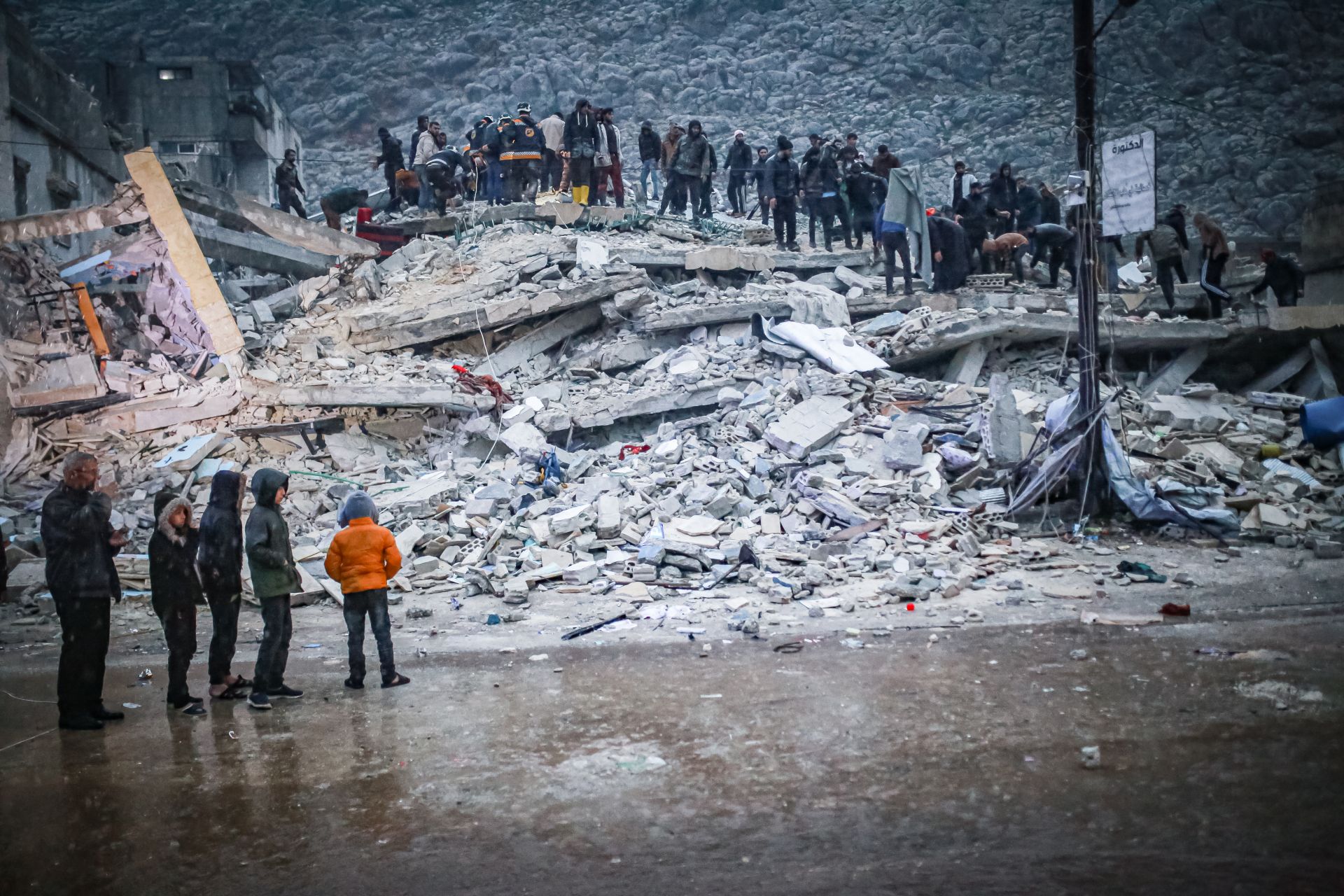Last night, as my wife and I were getting ready for bed, she started receiving voice messages from her family back in Aleppo, Syria. It was just after 3 a.m. their time, so it could not have been good news, and it wasn’t. They were out on the street, woken up in the middle of the night to their home swaying and the glass of the windows shattering under a 7.8 magnitude earthquake.
The fear in their voice reminded me of how they sounded years ago, when a shell had struck their building. “We were terrified, were terrified, so, so much,” one of her relatives said, her voice shaking. “May nobody ever experience it.”
Other messages started to trickle in from family members of our staff: some in Beirut, some in Damascus. Fortunately, the damage there has been limited.
As for my wife’s family, they spent the night in their car, like many others. They will probably do the same tonight, too, but they’ll have to brave their broken home again to get some blankets. It snowed last week in Aleppo, and there’s no gasoline and barely any electricity to keep people warm even when they’re inside their homes. Videos and images from her neighborhood, its surroundings and other parts of northern and northwestern Syria, as well as southern Turkey, showed buildings collapsing like houses of cards, the screams accentuating their disappearance in clouds of dust and smoke. A citizen journalist from Idlib posted a video, his breath steaming in the cold, of a building that had collapsed and claimed the lives of an entire family.
We spent the night checking in on friends and relatives in Syria and Turkey, where two large earthquakes last night led to a combined death toll of at least 2,300 as of Monday morning. The horror was palpable in the panicked voices of man, woman and child who broadcast images and called for help in places that had long suffered man-made cruelties and were now under assault by nature too, their plight exacerbated by years of conflict, neglect and corruption.
Not everyone we contacted checked in. While friends in Gaziantep, in southern Turkey, were distraught but well, we didn’t hear back from a friend in Idlib. A photo of her house showed just rubble. We don’t know if she survived.
The enormity of the tragedy in Syria and Turkey cannot be overstated. Tens of thousands have likely been injured, and the death toll is sure to rise further with so many unaccounted for. The 7.8 magnitude quake was followed by over 100 aftershocks, including a 7.7 tremor. Search efforts will continue for weeks, maybe months. Offers of assistance are streaming in from all corners of the globe as the world grapples with the extent of the suffering in a region that really could use a break. Even those who survived may face months or years of living in dangerous buildings prone to collapse.
The suffering itself is multifaceted. In government-controlled parts of Syria, there is barely a modicum of a state left. After 12 years of war that state is barely able to keep its people warm and fed at winter’s peak, let alone coordinate and fund rescue efforts at this scale. The areas in northwest Syria, like Idlib and parts of the country under Turkish control, house people that have already been displaced up to 20 times over the course of the civil war and now find themselves without homes once again. Ankara is busy coordinating its own rescue efforts in the country’s south, so the task of digging people out of the rubble falls once again to the overstretched and underfunded White Helmets, who spent the past decade rescuing people from under the rubble of airstrikes. Mousa Zidane, a White Helmets photographer, tweeted in the early morning that the volunteer force had retrieved 120 bodies and rescued 230 people from the wreckage in Idlib and Aleppo provinces. Meanwhile, the photojournalist Fared Al Mahlool said there was no electricity or water in Idlib after the earthquake.
As pledges of aid and support come pouring in from all over the world, few are aimed at this impoverished and embattled part of Syria. Though perhaps there is a silver lining, even if dark and macabre: At least those living in refugee camps in Syria and Turkey did not get trapped in the rubble of collapsed buildings.
As the journalist Zaina Erhaim tweeted: “Would have never expected to hear this sentence before. But it’s being said by many #Syria|ns now. ‘Those who live in tents in the camps are luckier today, and have more chances to stay alive.'”
With the epicenter of the quake a few dozen miles away from the Turkish city of Kahramanmaras, a people who have struggled under debilitating economic hardship will now also have to rebuild and mourn the thousands of dead. Aerial photos from Hatay in the south show collapsed buildings straight out of a war zone. There may be a reckoning there too, in the aftermath, once people have had a chance to breathe. As the journalist Nick Ashdown wrote, “This has been just a devastating decade in Turkey. Today’s horrors are very much intertwined with the overall political situation, since massive corruption has led to shoddy construction, stolen earthquake funds, minimum preparations for the inevitable, and an economy in tatters.”
Right now, though, there is nothing but sadness and heartbreak. Many of those suffering in this humanitarian catastrophe already had nothing. After that, too, has been destroyed, what have they been left with?
Sign up to our mailing list to receive our stories in your inbox.



